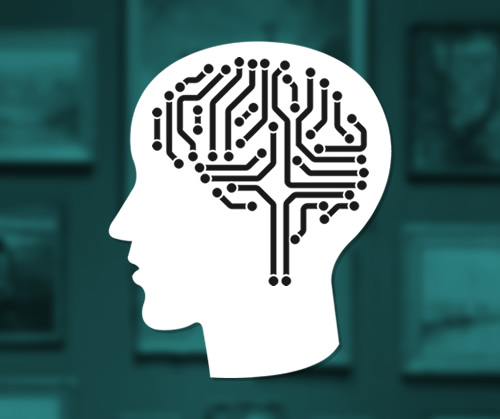Artificial Intelligence. It’s a concept that holds lots of promise, generates endless buzz, and is starting to make its way into everyday life. “In 2015, artificial intelligence went mainstream,” and undoubtedly, in 2016, we will begin to see an increase in experimentation within the cultural space.
In today’s post, we’ll explore some of AI’s most powerful uses related to machine learning and its impact on galleries, libraries, archives, and museums.
What is machine learning?
“Machine learning is a method of data analysis that automates analytical model building. Using algorithms that iteratively learn from data, machine learning allows computers to find hidden insights without being explicitly programmed where to look.” - SAS’s Machine Learning: What It Is & why It Matters
Collections
It comes as no surprise that museums have tremendous amounts of data. Strides have been made over the past decade towards structuring collections data and making it available for the public to access and experiment with. While still highly untapped, this valuable metadata holds power and yields interesting ways to analyze collections, objects, and creators in new ways. But, it also requires resources, tools, time, and expertise to work with.
In an ideal world, GLAM (galleries, libraries, archives, and museums) collections data would be structured and well classified, but taking into consideration that “more than 90 percent of (enterprise) data is unstructured, human-generated and sourced from various disparate entities” (IDC) we’d make the assumption that museum collection data could always use a little clean-up, maybe even an overhaul.
Could AI come to the rescue and even help museums make new discoveries about their collections? Those working with the museum’s collections management system could “train” a system to effectively clean-up, classify, and further understand their data. Want to quickly run a sentiment analysis across the title and didactic text of every object in the collection? You can – and it’s just a few clicks away! Now that is something to smile about!
See how three museums have have used sentiment analysis:
SFMOMA: Sentiment Analysis (via John Higgins)
Carnegie Museum of Art: Gulf Tower Project
Tate: Diving into the Museum’s Social Media Stream (via Elena Villaespesa)
Ticketing & Attendance
Imagine taking those massive sets of ticket and visitor traffic data and using AI to look for clear correlations between this and social media activity, weather, advertising spending, and other variables. It’s safe to say that you’d discover new and insightful information that could be used to make predicting crowd flow, allocating staffing resources, and overall planning more efficient.
Membership & Fundraising
Could pattern recognition easily help museums identify members who are most likely to renew, upgrade, or lapse? Definitely. It could assist development teams on their fundraising campaigns by deciphering trends, navigating through the social graph, and automating aspects of the donor outreach.
Online Store
Major e-commerce sites like Amazon, eBay, and Zappos have been using recommendation and personalization engines for as long as anyone can remember. By analyzing your behavior, i.e. pages you visit, products you look at and categories you explore, online retailers are able to make recommendations and/or provide a more personalized experience for each visitor.
It is clear that “artificial intelligence will eventually solve some of the world’s biggest problems - but it’ll take some smart humans to get it there.” We’re just at the beginning and look forward to seeing how AI will help the museum community in the near future.
Does your museum have plans to use any aspect of artificial intelligence this year? Share your take on the topic on Twitter at @Cuseum with the hashtag #musetech.
Related Reading
“Machine Learning and the Future of Authentication” (AAM’s Center for the Future of Museums)
“Deep Learning at the Museum” (Bengler)
References
Ciecko, Brendan. “Examining the Impact of Artificial Intelligence in Museums.” MW17: MW 2017. Published February 1, 2017. Consulted March 26, 2017.
http://mw17.mwconf.org/paper/exploring-artificial-intelligence-in-museums/



